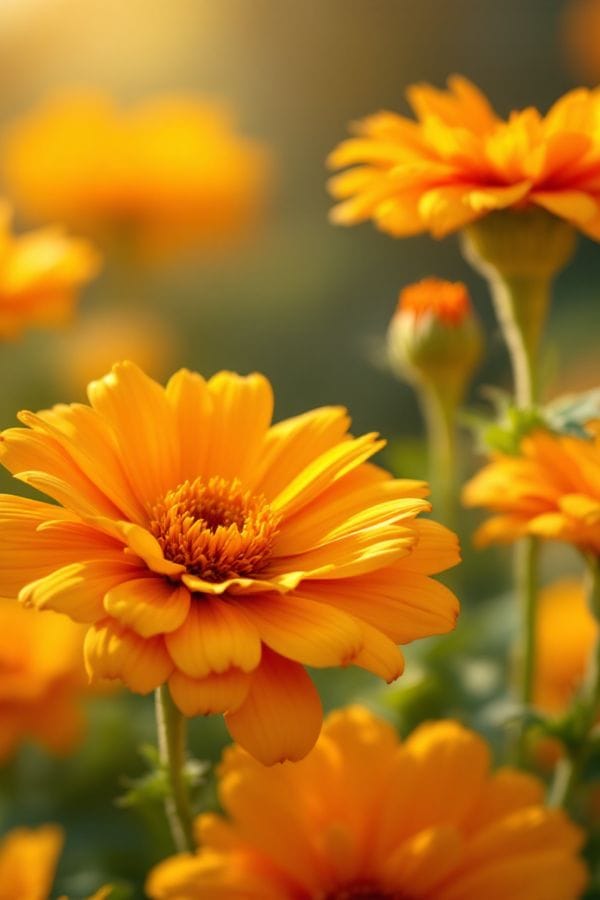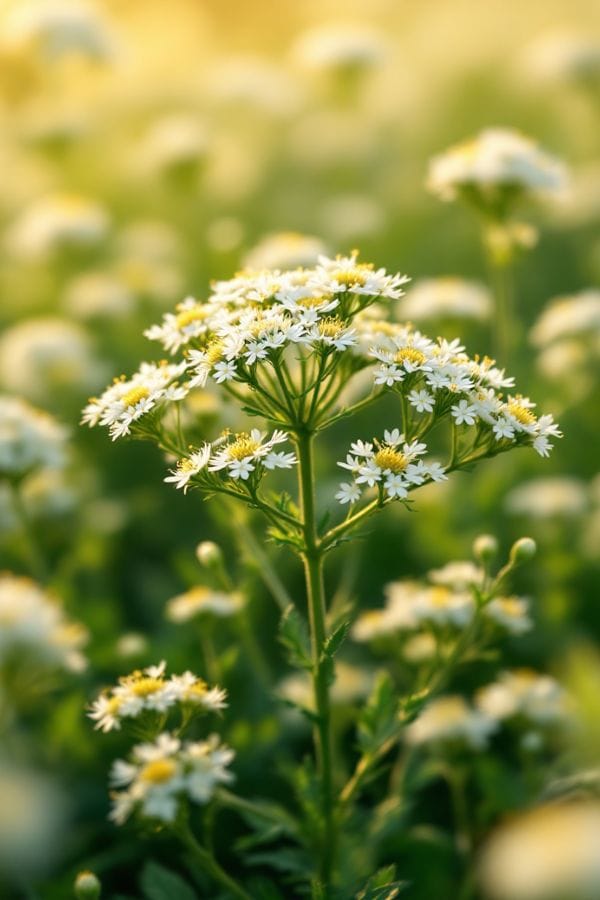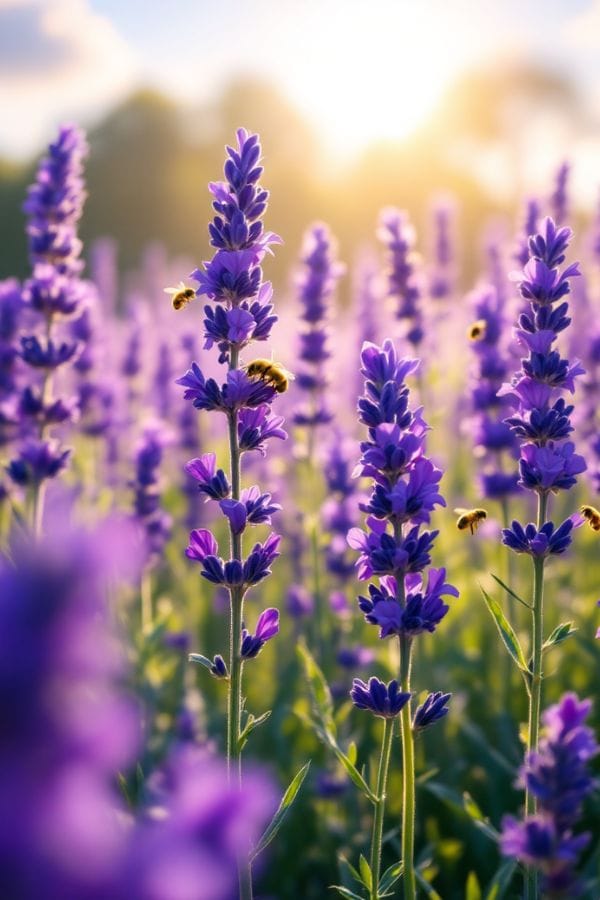Choosing the right echinacea companion plants for beginners is the secret to a garden that works smarter, not harder. By planting your purple coneflowers alongside specific allies like Calendula, Yarrow, and Catmint, you create a diverse ecosystem that naturally fights pests and boosts blooms without extra chemicals.
While echinacea attracts bees and butterflies, its companions handle pest control, soil health, and weed suppression. Each plant has a job, and together they reduce your maintenance time while delivering a stunning display.
Garden Update: Want to grow the best companions easily?
The Medicinal Garden Kit includes seeds for Echinacea, Yarrow, and Calendula all in one box!
Click here to get 10 premium herb seed packets + a FREE Herbal Guide!
The Power Trio: Best Companion Plants for Pollinators
If you are looking for echinacea companion plants for pollinators, bees, and butterflies, these three are your best bet. They are easy to find, easy to grow, and offer significant benefits.
1. Calendula (Pot Marigold)

This cheerful, sun-loving flower is a natural “pollinator magnet.”
- The Benefit: By attracting bees and butterflies, calendula ensures your echinacea gets the pollination it needs to flourish. It also acts as a “trap crop,” drawing aphids away from your coneflowers.
- Medicinal Bonus: Like Echinacea, Calendula is a powerful skin healer.
- Learn More: (Placeholder link to your future Calendula Pillar)
2. Yarrow (Achillea millefolium)

A powerhouse in the garden, yarrow is the perfect neighbor for coneflowers.
- The Benefit: Yarrow attracts beneficial insects like ladybugs and lacewings that feast on common garden pests. Its deep roots also improve soil structure, mining nutrients that help nearby plants thrive.
- Learn More: Yarrow Mastery: The Complete Guide to Medicinal Uses, Growing, and DIY Remedies
3. Lavender

The aromatic scent of lavender is a natural pest deterrent.
- The Benefit: It helps repel moths, mosquitoes, and other unwanted bugs that might bother your garden. Visually, the purple spikes of lavender look stunning next to the daisy-like blooms of echinacea.
Design Secrets: Texture, Contrast, and “Living Mulch”
Companion planting isn’t just about function; it’s about designing a garden that looks professional and takes care of itself.
1. Visual Contrast: Spikes vs. Daisies
- Agastache (Anise Hyssop): This is a design secret weapon. Its airy, vertical spiky flowers offer a stunning contrast to the round, bold daisy shape of the coneflowers. Plus, it attracts hummingbirds!
- Perennial Salvia: Like Agastache, Salvia adds vertical spikes of blue or purple that make the round Echinacea blooms pop.
2. The “Living Mulch” Strategy
Why spend money on wood chips when you can use plants?
- Catmint (Nepeta): Use this as a “living mulch.” It stays low to the ground with a soft, spreading form that fills in around the taller coneflowers. This shades the soil to lock in moisture and helps suppress weeds so you don’t have to pull them.
- Gaillardia (Blanket Flower): Another excellent ground-covering option that tolerates heat and drought like a champ.
3. Continuous Color: The “Succession” Plan
To keep your garden looking great all season, consider what to plant in front of echinacea for continuous summer color.
- The Early Show (Before Echinacea): Plant Baptisia (False Indigo). It blooms early in the season, offering tall spikes of color right as your coneflowers are just gearing up to take center stage.
- The Late Show (After Echinacea): Plant Sedum (Stonecrop). Just as your coneflowers begin to wind down in late summer, Sedum steps in with clusters of blooms that keep the color going well into fall.
Companions for Full Sun and Poor Soil
One of the most common questions is how to choose the best companion plants for echinacea based on soil. Since Echinacea loves full sun and tolerates average to poor soil, you need neighbors that won’t demand too much water or fertilizer.
- Thyme: This low-growing herb is a fantastic ground cover that helps suppress weeds.
- Rosemary & Sage: These fragrant woody herbs deter pests while attracting bees. They hate “wet feet” just like Echinacea, making them perfect watering buddies.
- Coreopsis: This plant shares a love for sunshine. Its vibrant yellow flowers create a delightful contrast to the purple coneflower petals.
Grower’s Tip: Echinacea companion plants that like full sun and poor soil are the easiest to maintain because you don’t have to fuss over them. Learn more about soil requirements in our guide: How to Grow Echinacea for Beginners.
What Should Not Be Planted Next to Echinacea?
Knowing what should not be planted next to echinacea is just as important as knowing what to plant. Avoid these common companion planting mistakes:
- Moisture Lovers: Do not plant Echinacea next to plants that require constant heavy watering, such as Ferns, Hostas, or Impatiens. The excess water required for these plants can cause Echinacea roots to rot.
- Heavy Feeders: Avoid planting them directly next to heavy feeders like tomatoes or corn unless you are spacing them out significantly. These crops deplete the soil of nutrients that the coneflowers need to bloom.
- Aggressive Spreaders: Be careful with aggressive mint varieties (like Peppermint) planted directly in the ground, as they can choke out the coneflower’s root system.
FAQ
Catmint and Gaillardia (Blanket Flower) are excellent choices. They tolerate the same heat and drought as Echinacea but grow low and wide, covering the bare soil to lock in moisture and stop weeds from sprouting.
Generally, space companion plants 18–24 inches apart from your Echinacea. This ensures good airflow, which helps prevent fungal issues like powdery mildew, while still allowing the plants to fill in for a lush look.
Yes! Garlic and Onions (Allium family) are great companions because their strong scent repels pests like aphids. Just avoid planting tall crops like corn immediately to the south of your Echinacea, which might block their sun.
Ready to start? Get the seeds for Echinacea, Yarrow, and Calendula all in one package with the Medicinal Garden Kit.